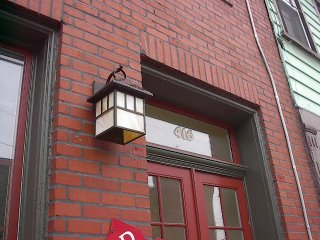
I received a call the other day from a man who wanted to buy an fixer-upper for an investment. His main requirement was that it be close to town. "I listen to a lot of talk shows and talk to a lot of people," he said. "A lot of the older folks are saying they're thinking about moving back to the city."
A lot of us can see these trends in our own neighborhoods. While once urban neighborhoods were populated with youth, in a few years they may be taken over by those approaching the golden years.
At any rate, a new book begins to confirm that repopulating the core as a trend is indeed more than talk. Tomorrow's Cities, Tomorrow's Suburbs, published by the American Planning Association (APA), analyzed metro areas and found that by 2000, old city neighborhoods were thriving while middle-aged suburbs were in decline.
Of the 2,586 suburbs and 35 large metropolitan areas analyzed, the authors found that 155 suburbs were worse off than Detroit, with per capita incomes of less than 60 percent of their metropolitan area's income. Detroit was used as a benchmark for cities with problems because it had the lowest ratio of city residents' per capita income to metropolitan income in 2000.
Additionally, the authors report that more than 50 percent of suburbs in the study had declined faster, or increased slower than their central cities in relative per capita income.
Suburban malaise measured by suburban income decline was especially severe in the Atlanta, Baltimore, Chicago, Cincinnati, Cleveland, Detroit, Miami, Orlando, San Antonio, San Diego, San Francisco, Seattle, Tampa, and Washington, D.C., metropolitan areas, where 50 percent or more of the suburbs lagged behind their central cities relative income performance between 1990 and 2000.
Neighborhoods built between 1940 and 1990 were much more likely to decline in relative family income than were pre-1940 neighborhoods. Approximately half of pre-1940 neighborhoods were going up in relative family income during the 1990s in the six metropolitan areas (Atlanta, Chicago, Los Angeles, Philadelphia, Richmond, and Washington, D.C.) where the authors analyzed income changes in census tracts. In contrast, more than 75 percent of neighborhoods built substantially during the 1960s were going down in relative family income during the 1990s.
The authors partially attribute city revival to the ability to attract more middle- and upper-income households. Faster revival of old neighborhoods is likely within the next decade because cities have been good at attracting empty nesters, middle-aged neighborhoods dominated by small houses are now considered obsolete, and fewer people believe the best neighborhoods are formed from isolated detached houses in an auto-dependent suburban development.
In the book, the authors attribute suburban decline partially to the size of available housing, citing the increase in the median size of a new house from 1,100 square feet in 1950 to 2,000 square feet in 2000. The authors theorize that suburbs dominated by housing built between 1945 and 1970 will likely have trouble attracting and retaining middle-income households since larger housing stock became more readily available in the 1990s.
Another reason for future suburban decline may be increasing awareness that the exurbs are proving to be more dangerous than the central cities. "Our research in 10 large metropolitan areas shows that in each area, one or more exurban counties had more deaths associated with leaving home, mainly traffic deaths, than occur in central cities from the combination of traffic deaths and homicides by strangers."
Additionally, the authors caution that when parents realize the perceived safety of cul-de-sac neighborhoods is in fact "bogus," support for families preferring suburbs may erode further.
While the authors' book focuses on analysis of the 2000 census data, Lucy and Phillips did analyze data from the new American Community Survey of the U.S. Bureau of the Census. Early data analysis for 20 large cities indicates cities continued to experience revivals between 2000 and 2003.
The authors argue that opportunities for condominium ownership have influenced middle-income residents' location decisions. Increased availability of condo ownership is partially a result of changing consumer preferences, but also partly a belated adaptation by developers to provide a housing ownership opportunity that has been underserved in many metropolitan housing markets. According to Lucy and Phillips, where developers respond to this condo market demand, as many more have done since the 2000 census, central cities are more likely to make comebacks that can be measured by increases in relative income.
The book is by William H. Lucy and David L. Phillips, professors of urban planning at the University of Virginia. The two have spent more than 20 years studying city and suburban trends.


